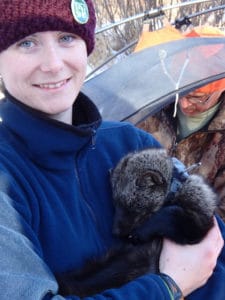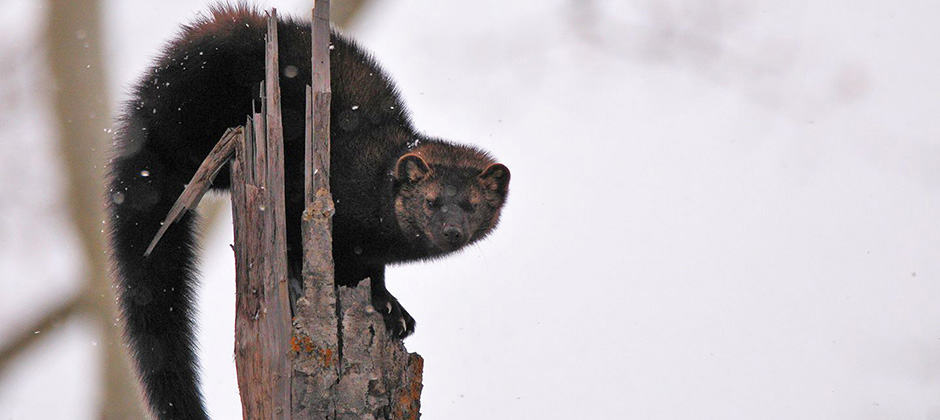Share this article
In Canadian biosphere, key corridors cross private land
The Beaver Hills Biosphere in central Alberta includes a patchwork of protected areas, but some of the terrain that fishers in the region rely on most are unprotected.
“We really wanted to understand how the animals use the landscape, and specifically how animals use landscapes of high heterogeneity with different types of land all intermingled,” said Frances Stewart, lead author of a recent study on fisher movements published in Scientific Reports, who completed the research as part of her PhD thesis at the University of Victoria.
The Beaver Hills Biosphere is made up of a mix of protected areas and land used for resource extraction and agriculture, including private parcels and government land, she said. Fishers recolonized this area in the 1990s.

Researcher Frances Stewart studied fishers for her PhD and discovered that forested corridors allowed animals to move between protected areas. ©Julia Shonfield
Stewart and her colleagues were curious about fisher movements since the species is right in the middle of the food chain. “If we can understand how fisher use the landscape, we can also infer how larger and smaller animals might be using it as well,” she said.
The research team live trapped 10 fishers — five males and five females — and fit them with GPS collars. The collars provided data on their locations every five minutes and were able to store data for up to 92 days.
After collecting the data and using a statistical model that looked at both habitat selection and movement, Stewart and her colleagues found the most important aspect of the landscape the fishers were using consisted of forest corridors, which fishers often moved through to get to suitable habitat.
“Although there are some individual differences between animals, overall they were piecing together multiple steps within the forested areas to move,” she said.
Some of the fisher movements occurred within protected areas, and some did not. “So the protected status of the landscape that the animals were using wasn’t a predictor of their movements,” Stewart said. Protected areas are still important, she said, but for fishers, it’s the forested corridors between them that matter most, including on private lands.
“This underscores that the protection of our landscape doesn’t end at the border of a protected area, but extends to the surrounding landscape,” Stewart said. “It is important to continue prioritizing habitat for species in the matrix as well.”
Header Image: A fisher in the Beaver Hills Biosphere reserve in Alberta, Canada. ©Christopher Lee








